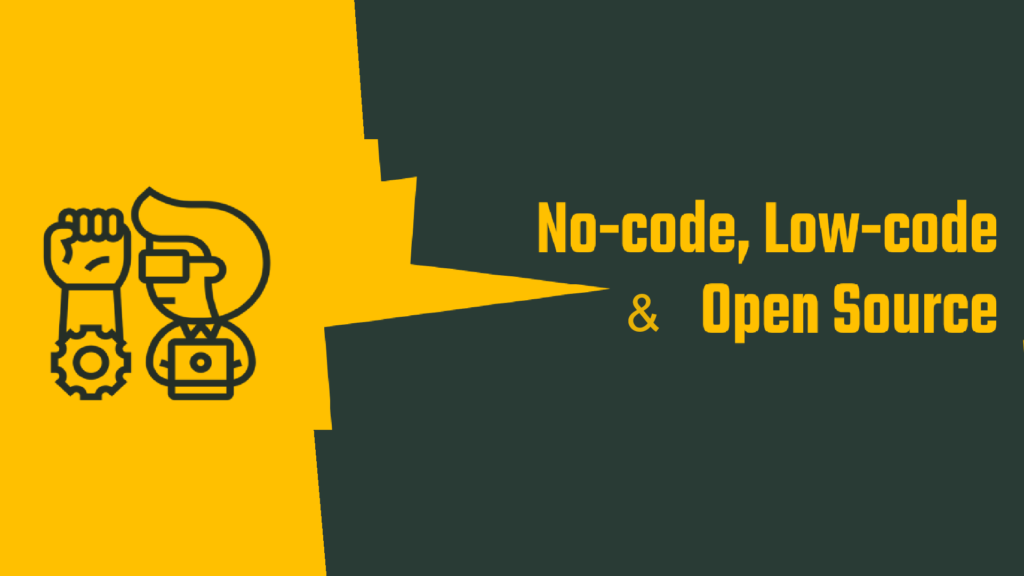
Before talking about lowcode and opensource, let’s come back to the differences between lowcode and nocode, two notions that are quite close but not necessarily clear.
Basically, nocode is intended for non-developer users, so that they can create applications without coding, just with the mouse with drag and drop of ready-to-use components, and of course knowledge of the nocode platform used.
While lowcode is an approach that simplifies development, reduces the amount of code used, and above all is aimed at developers. From beginners to experienced developers, but to developers, because there will be a need for code at some point. Part of the configuration is generally done with a nocode interface, but advanced configuration will be done with code, at least in part.
Nocode for non-coders, and Lowcode for developers, it’s crystal clear.
There are numerous proprietary lowcode solutions: OutSystems, MsPowerApps, Mendix, etc. and already in place at least in large companies.
What do open source solutions bring?
As always, open source solutions democratize use. That is to say, making these solutions accessible to SMEs or ETIs, who will implement low-code solutions to gain efficiency, create applications more quickly, and ultimately innovate.
Open source solutions democratize the use of lowcode for SMEs
On the one hand, proprietary solutions can be expensive, whereas open source solutions are free or more accessible.
On the other hand, open source solutions are a base on which it is possible to develop your own components or connectors, apply your security constraints, and thus make it possible to set up a low-code architecture for the entire company, centralized and controlled. by the DSI.
Open source solutions make it possible to set up a centralized architecture controlled by the IT department and used by the business lines.
Indeed, “shadow-IT”, that is to say hidden IT, carried out by business teams and unknown to the IT department, remains a major risk to sustainability and governance.
And nocode can largely lead to an increase in shadow IT, with business teams creating their applications themselves, without involving the IT department. Applications that must live, evolve, and also survive the departure of the employee who created it… Not to mention that each of the business teams will be able to choose a different no-code solution and multiply the skills necessary for maintenance.
Lowcode can have the same effect in terms of shadow-IT, all it takes is one developer in the business team.
However, we cannot blame the professions for finding solutions to meet their challenges via nocode or lowcode solutions. Here they only circumvent the unavailability of IT teams.
Setting up, centrally, a single solution, secure and accessible to all, to allow businesses to create their own applications, will help reduce the company’s shadow-IT.
Not to mention the hosting of open source solutions which can be done on premise and not only in SaaS, to guarantee confidentiality and other regulations, even if this may be the case for proprietary solutions.
The choice of an open source lowcode platform remains relatively open, to cover all uses, with solutions like Appsmith, Budibase, Convertigo, Axelor, Baserow, Nocodb, N8N, …
CIO, innovation managers, it’s up to you to give your businesses the means to carry out the applications necessary for their innovations!